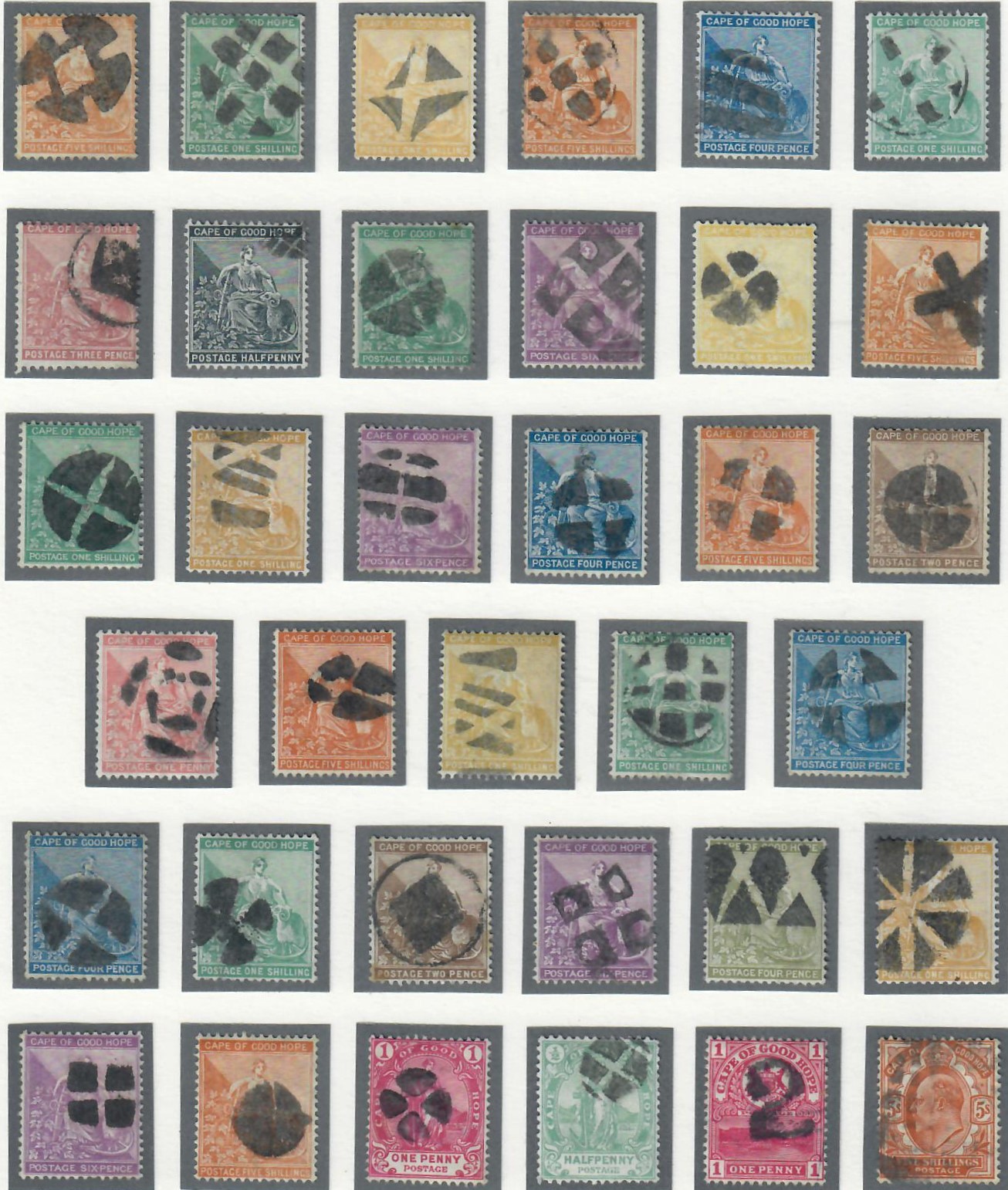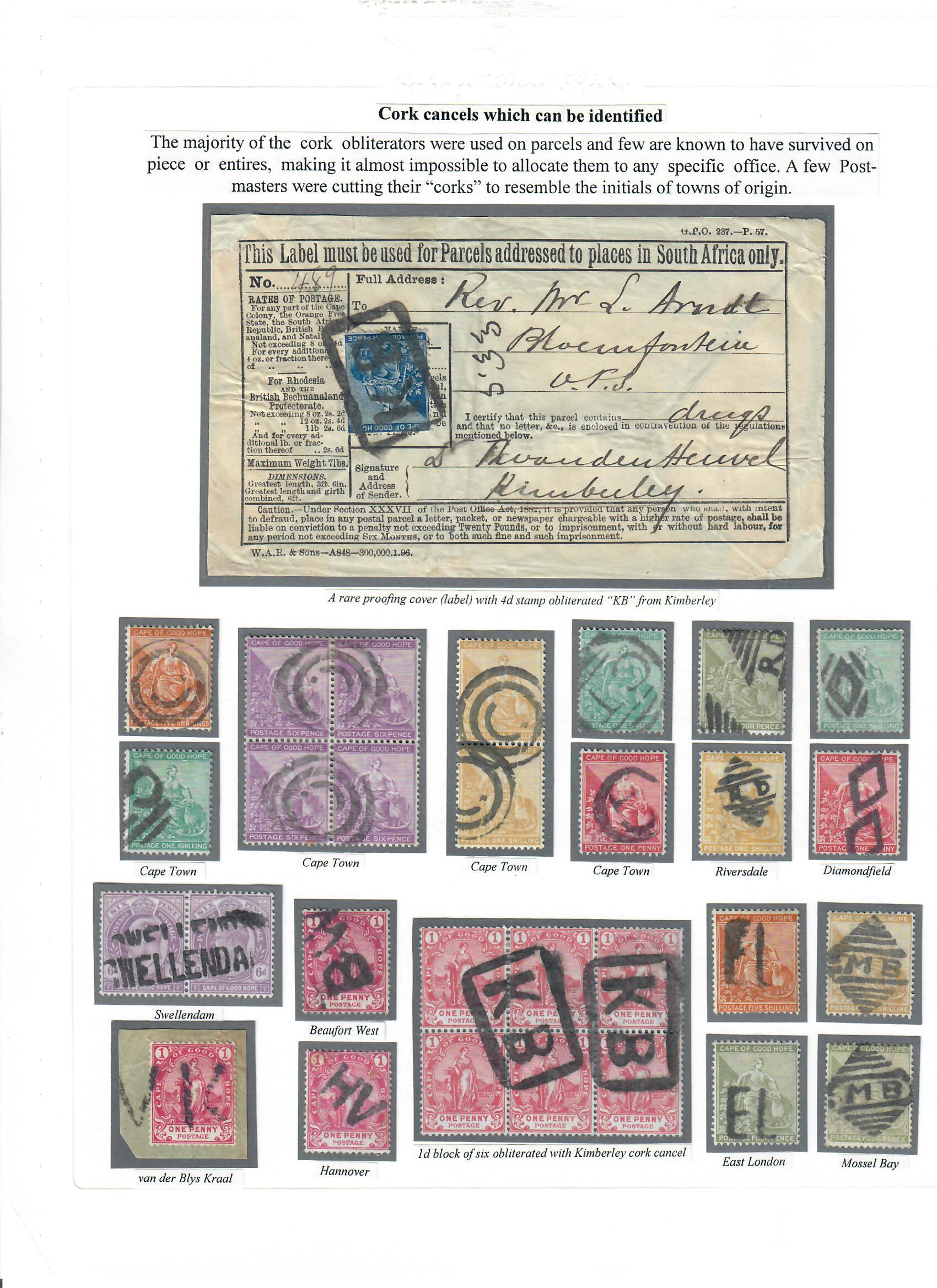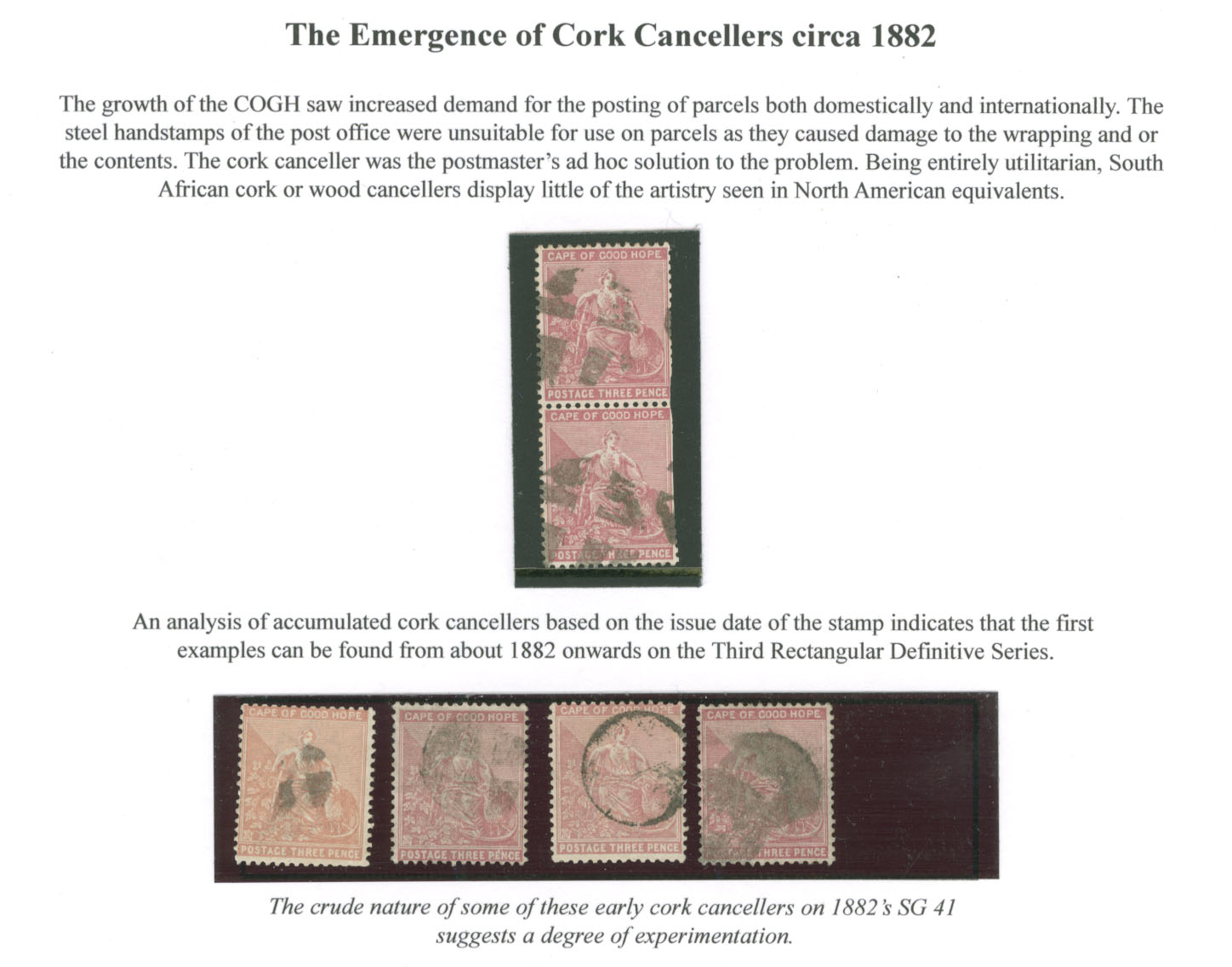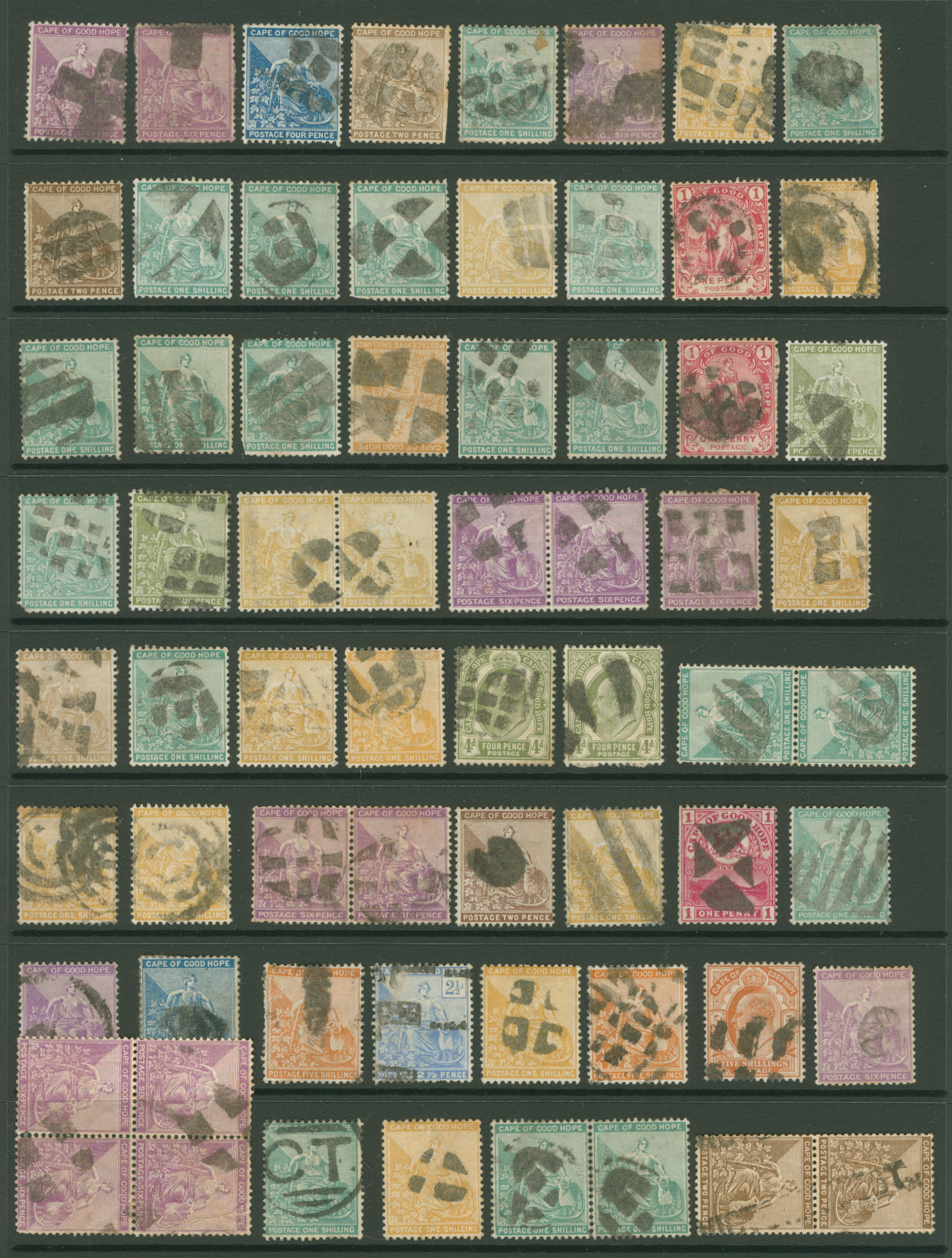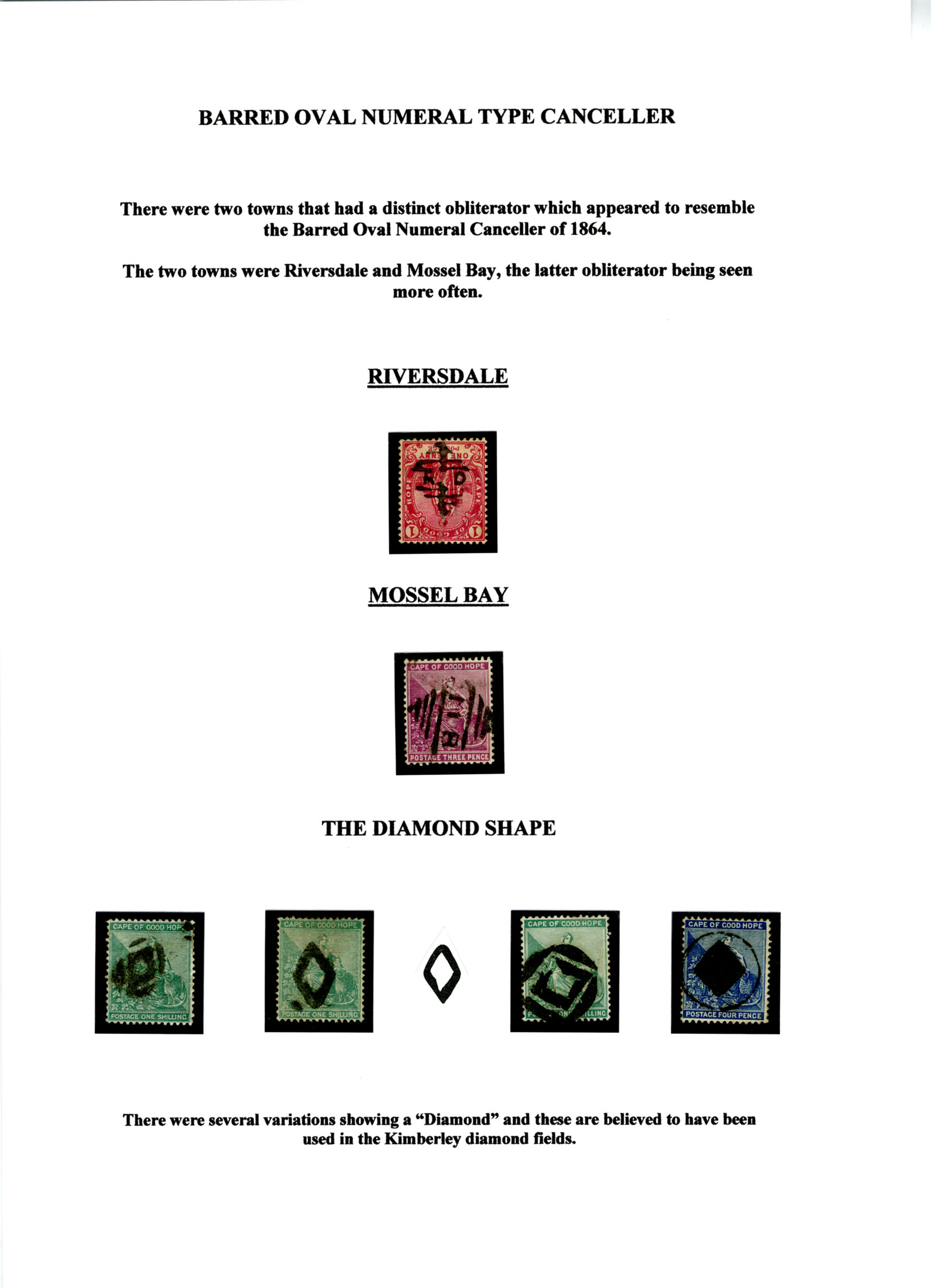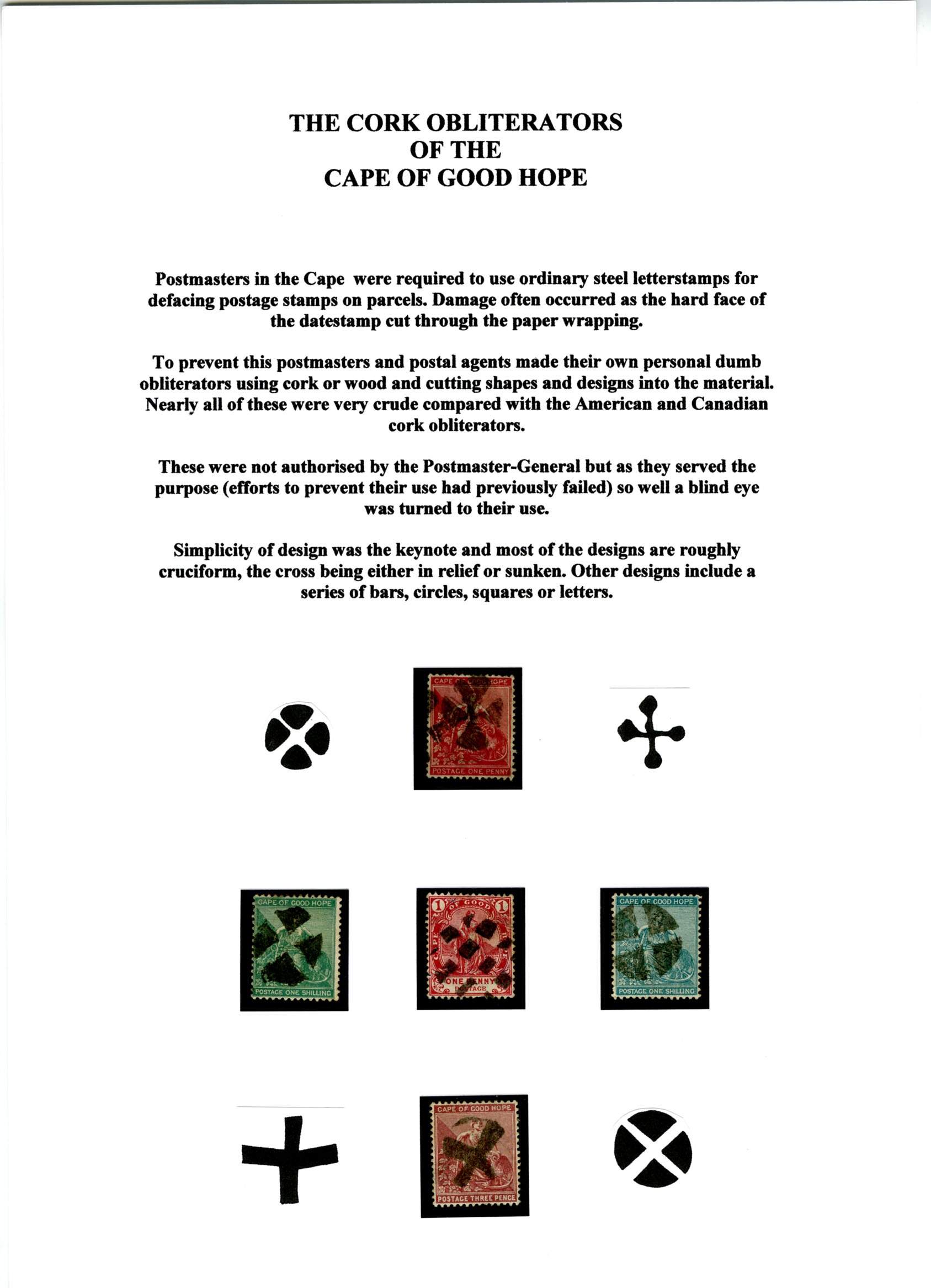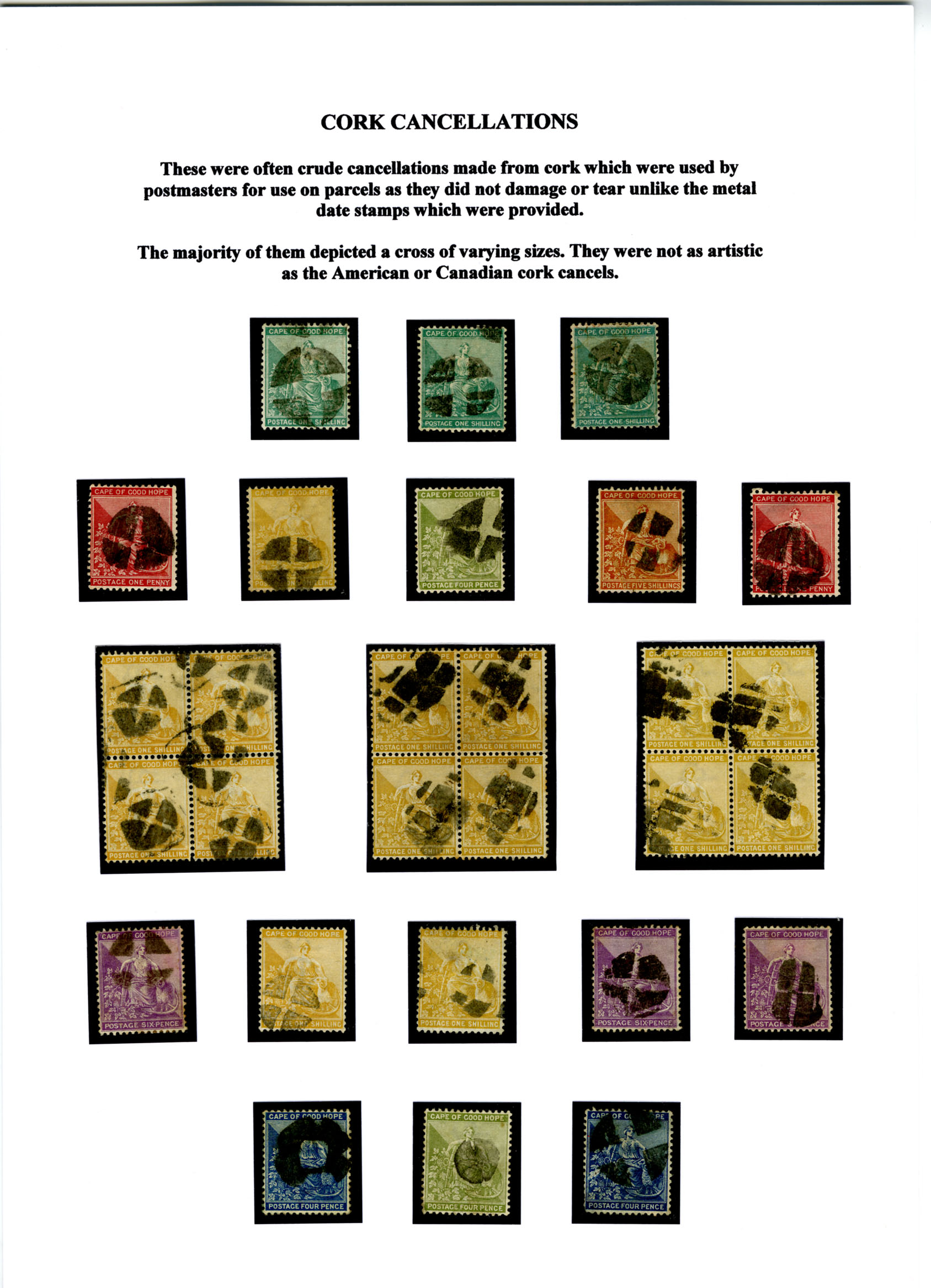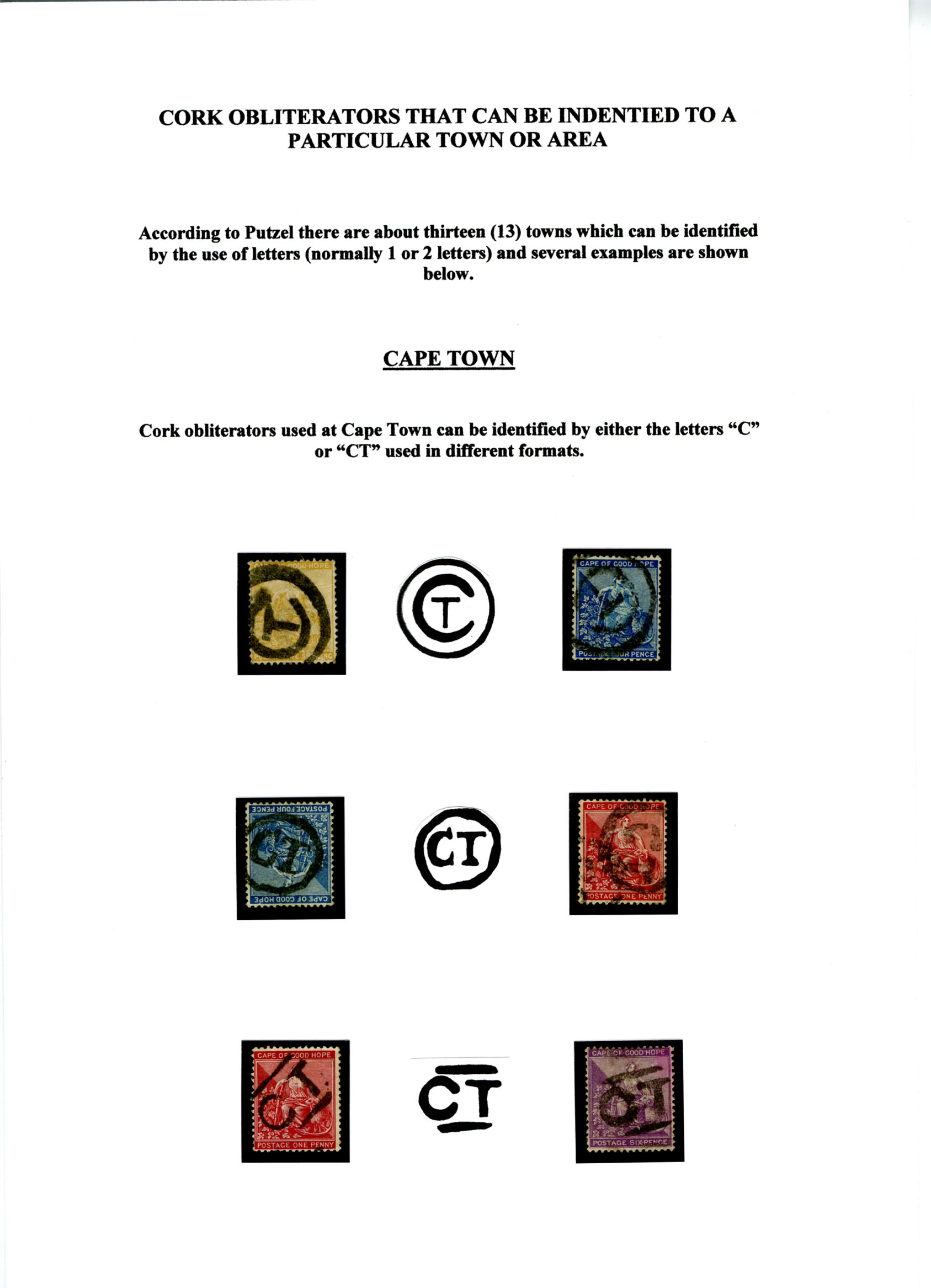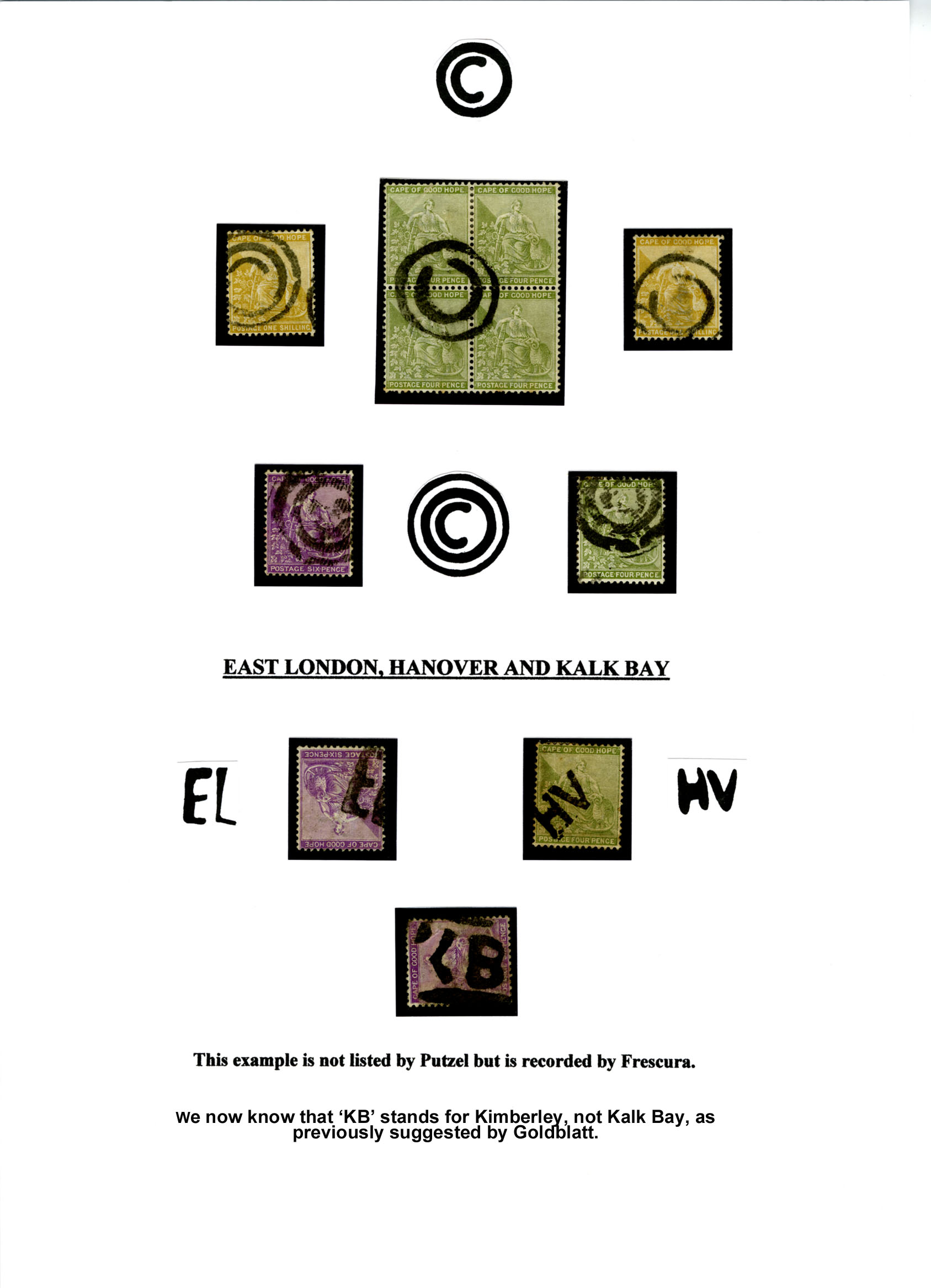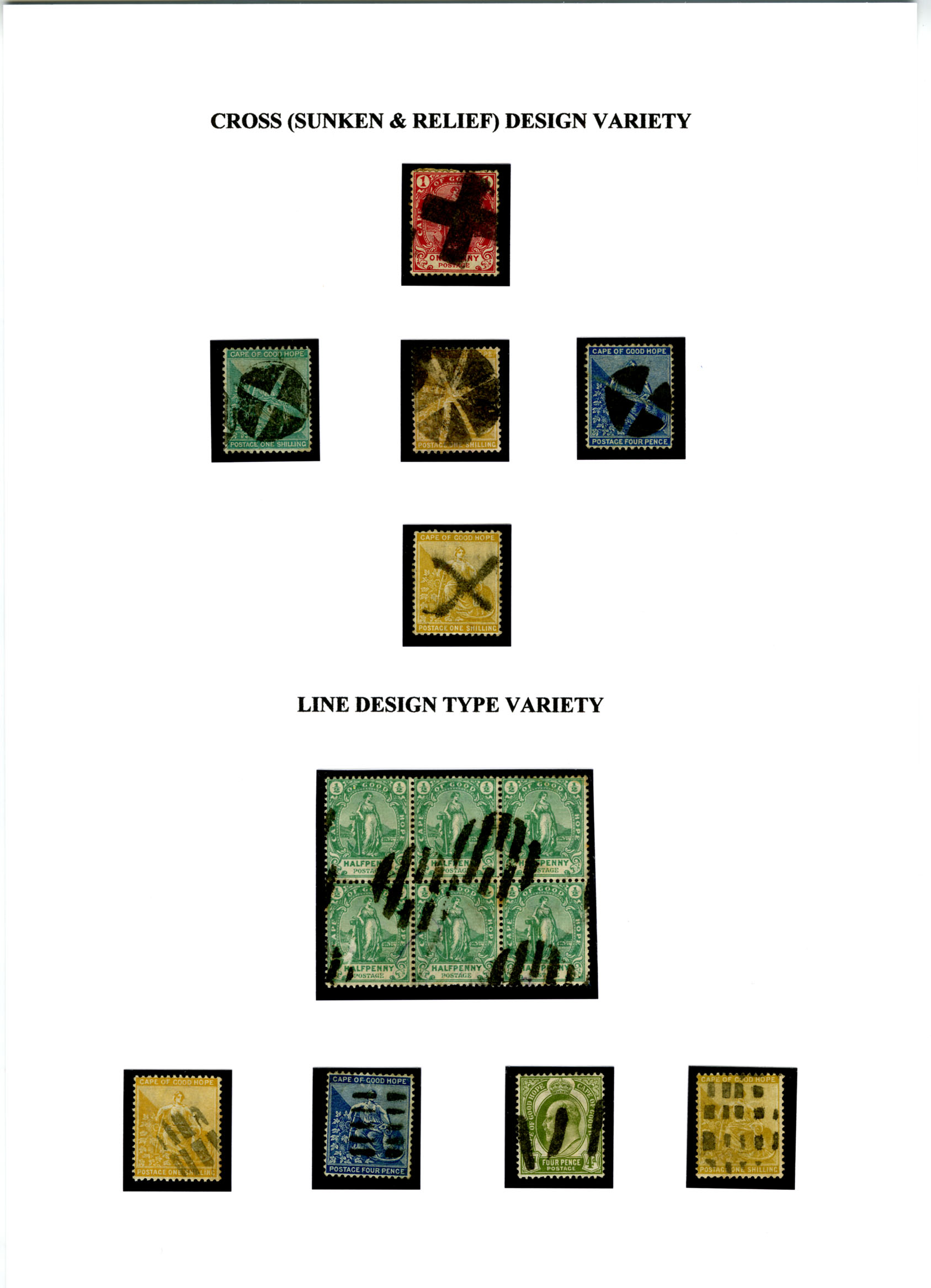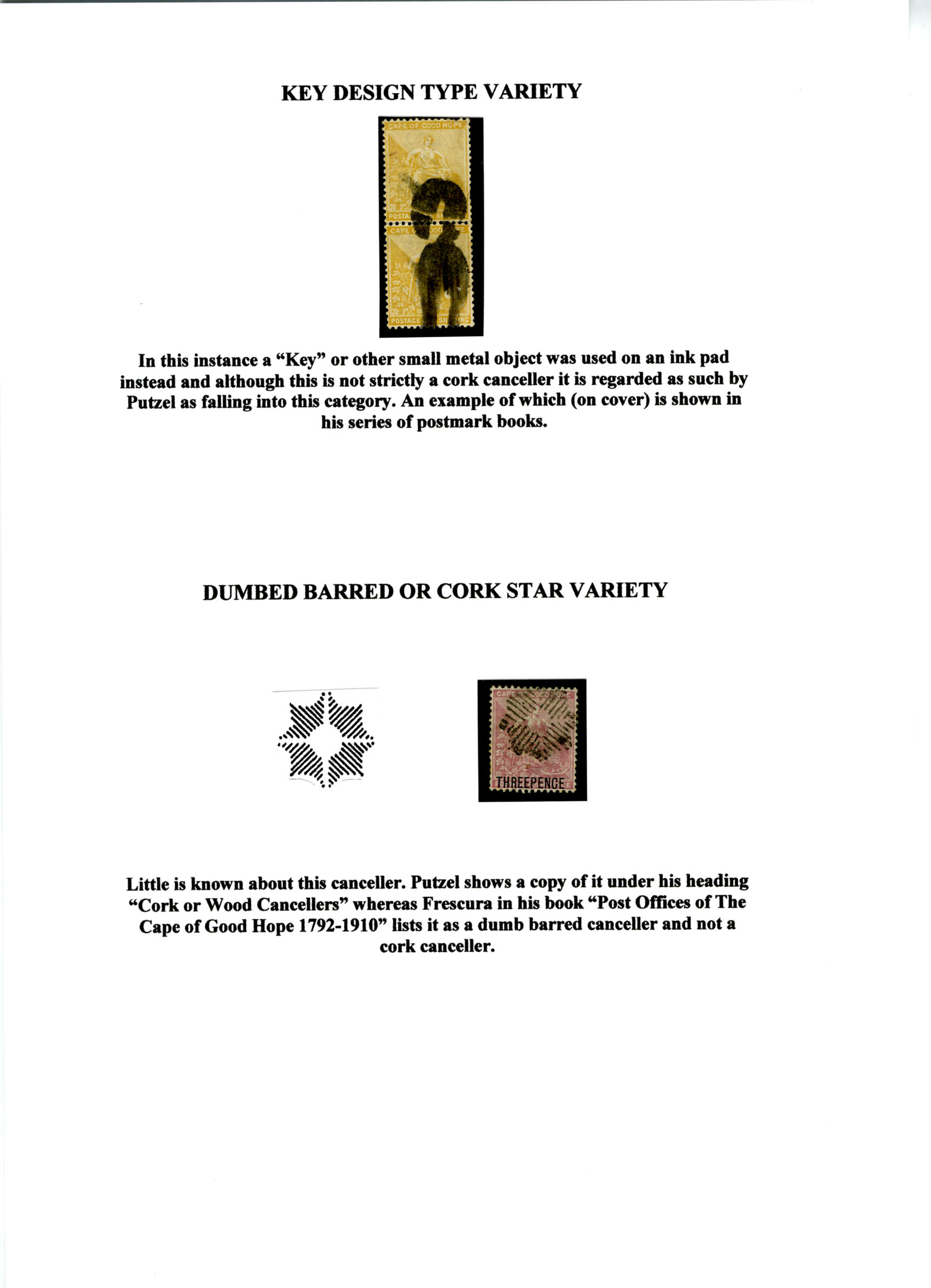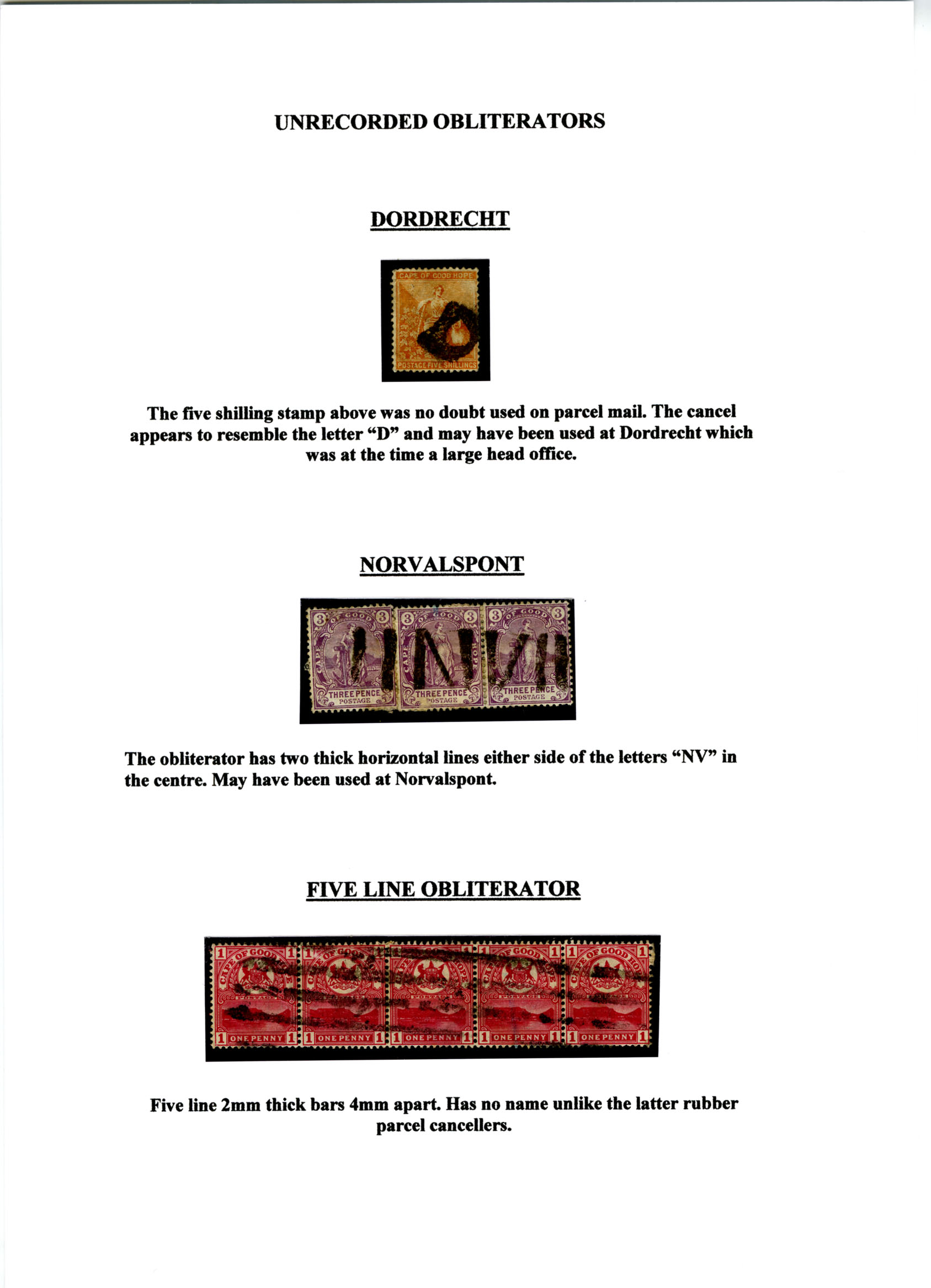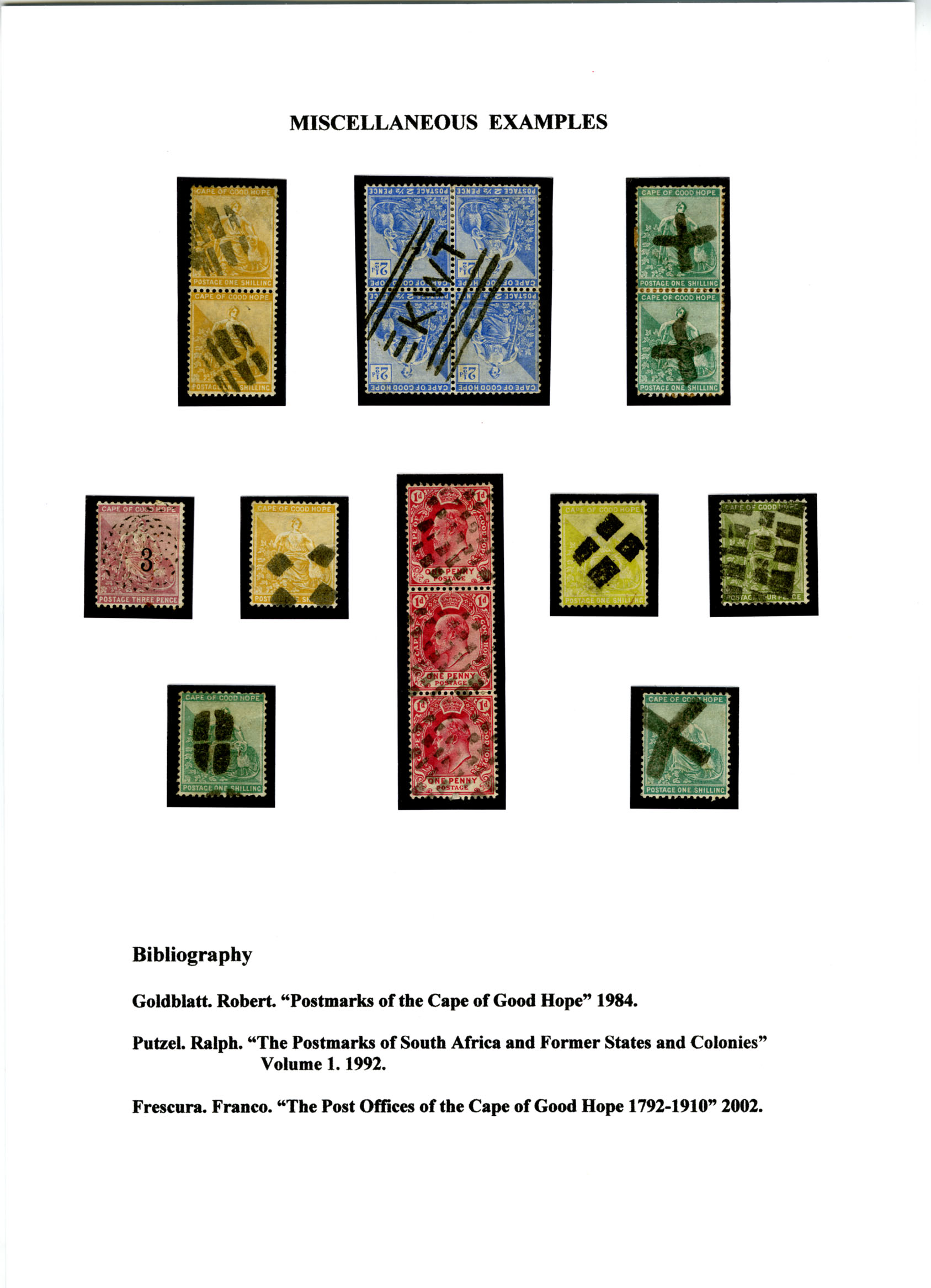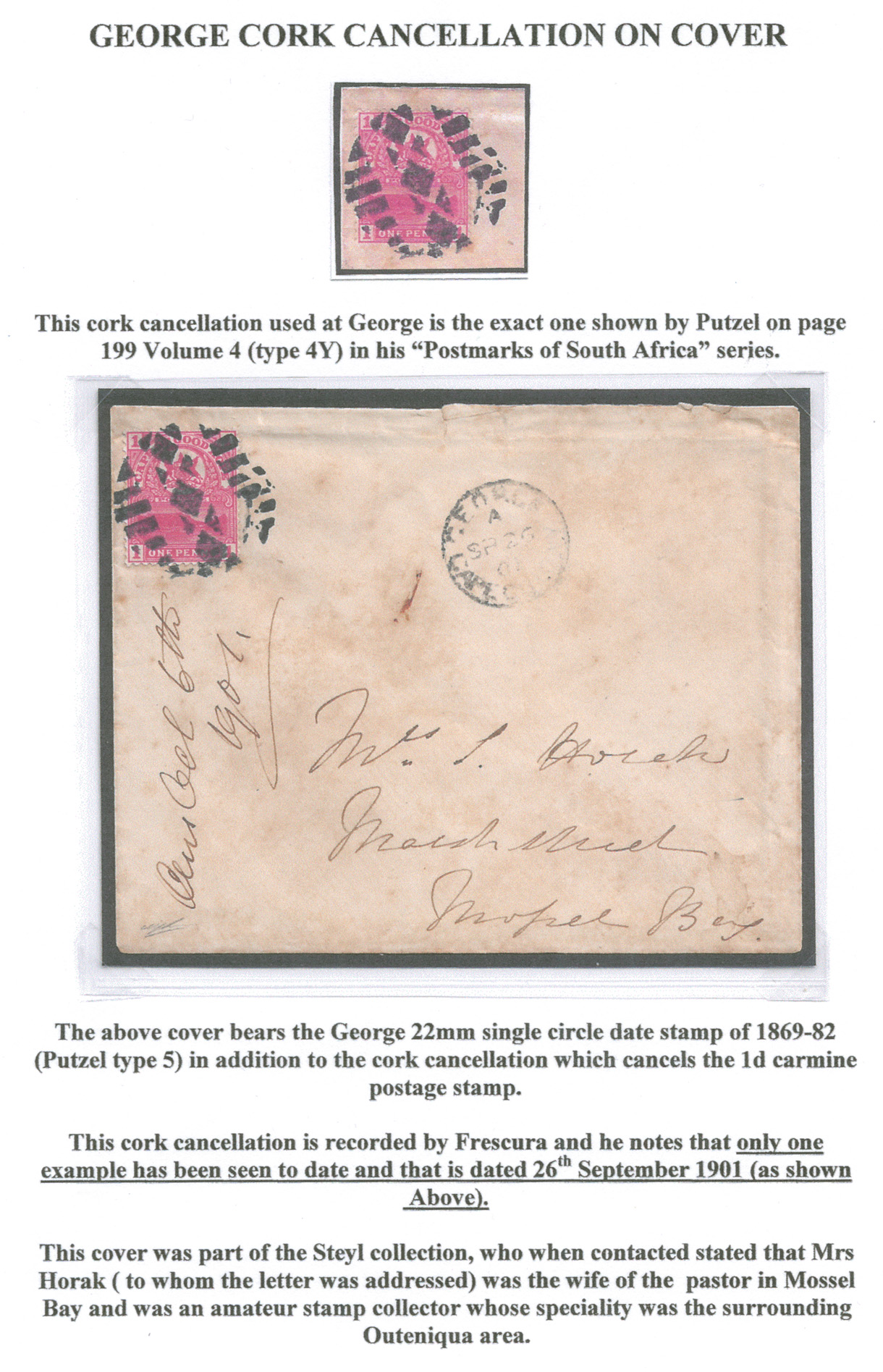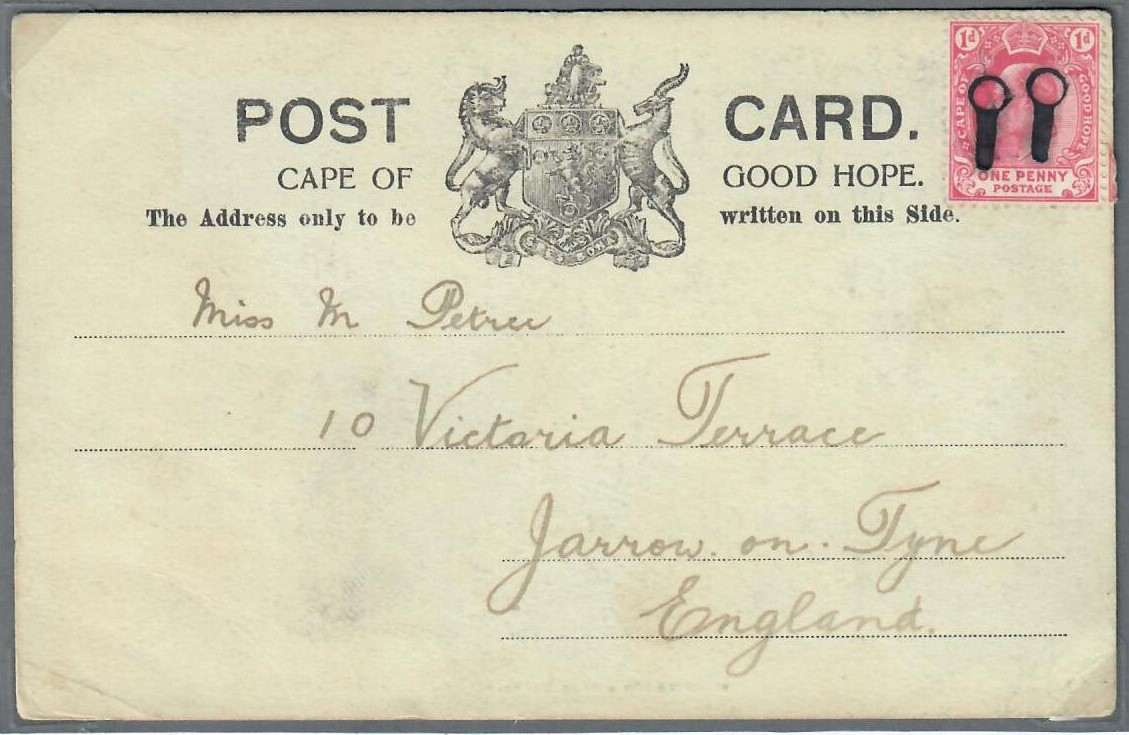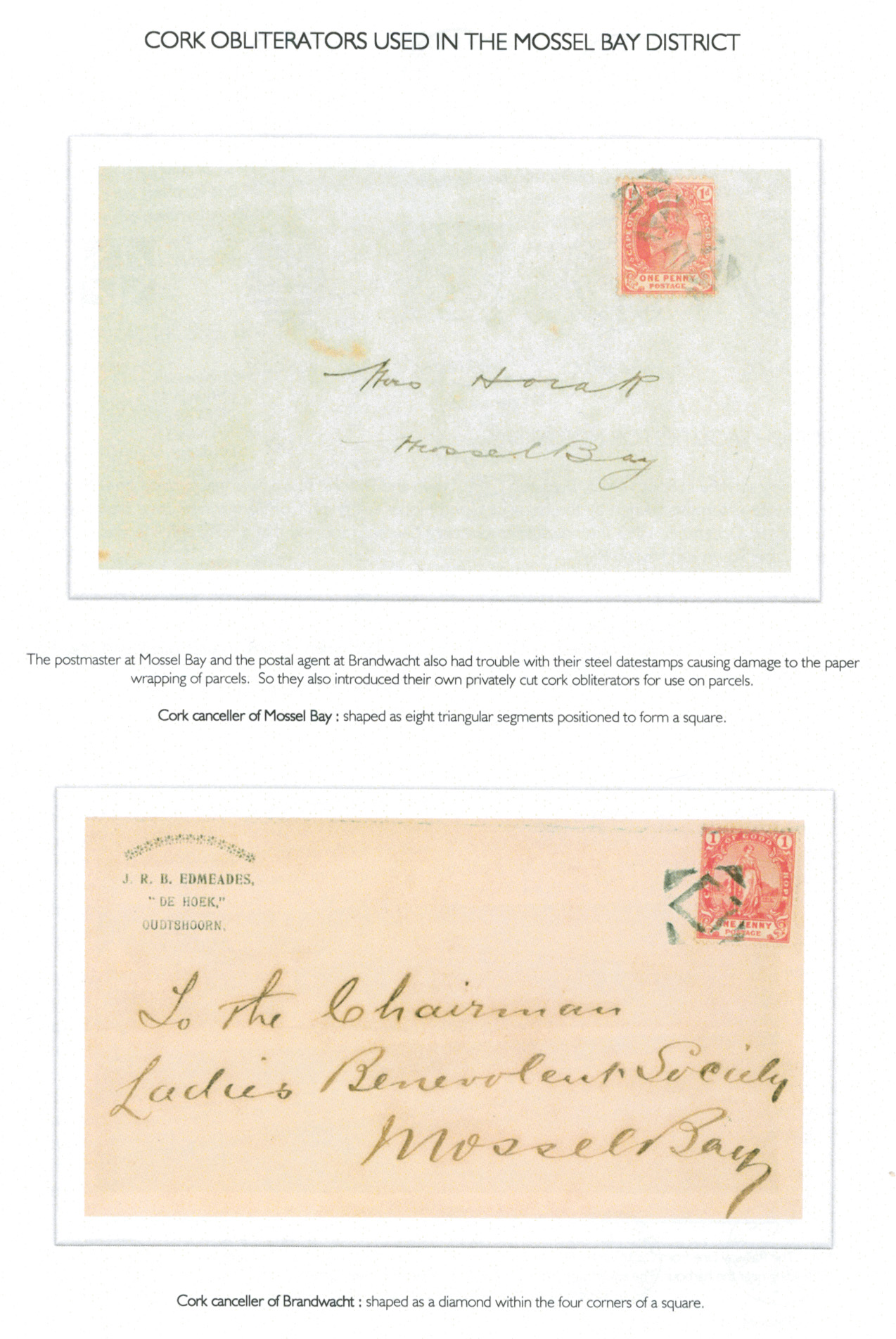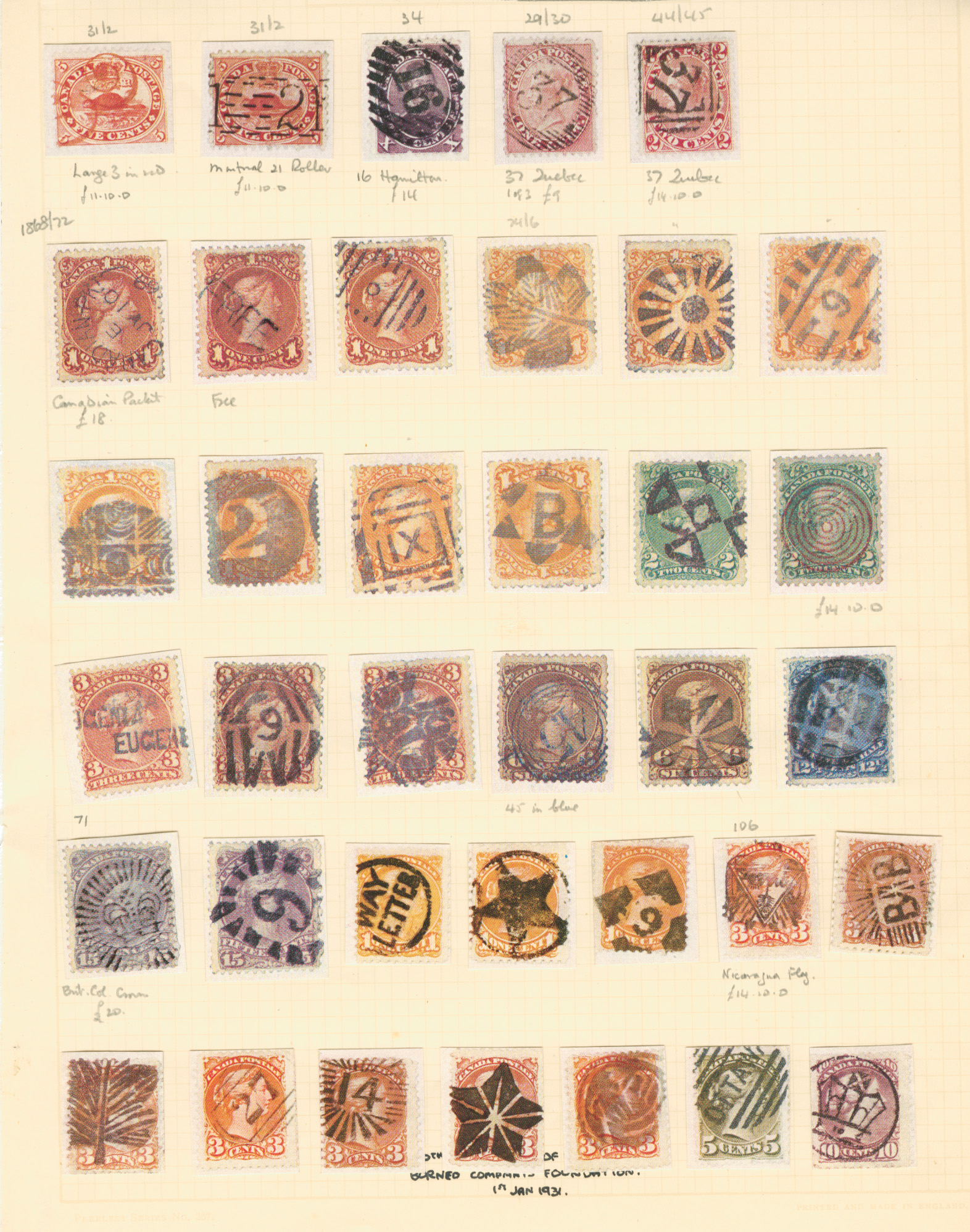Cape of Good Hope: Cork Cancellations
Quote from yannisl on September 20, 2020, 7:07 pmLooking for contributions to compile a list of known "cork cancellations" of the Cape of Good Hope. I attach what is known to me. I would appreciate any assistance you could provide in this respect.
The challenge of course is to name and somehow categorize the "unidentified ones". Any suggestions?
Looking for contributions to compile a list of known "cork cancellations" of the Cape of Good Hope. I attach what is known to me. I would appreciate any assistance you could provide in this respect.
The challenge of course is to name and somehow categorize the "unidentified ones". Any suggestions?
Uploaded files:Quote from Steve on September 20, 2020, 7:17 pmI do not know what it is about cork cancellers but I have always found them irresistible. You have some here that I have not seen. All are VERY nice examples, some superb and beautifully presented. (I can't wait to buy your book!). Bob Hill has a good collection of these with a few on cover. Robert Johnson had similar. I wonder who bought them?
Congratulations on owning the 'KB' cork canceller proving piece. This is probably the most desirable item in the field of Cape cork canceller collection. (Show me a better!) I saw it on-line about 5 years ago and noted it was from Kimberley, not Kalk Bay, as suggested by Robert Goldblatt and Ralph Putzel. I would rather own this piece than a contrived cork canceller on cover. It's the real deal!
I have attached a few Cape cork cancellers of my own selected on the basis that you a]. do not show some among your selection, b]. that they raise some questions and c]. that a few of them complement what you show. By comparison to yours, mine are everyday working examples of the postal historian's hobby and the postal clerk's daily routine. The bottom-most 2d brown pair (actually a folded block of four cancelled twice), says 'VICTORIA WEST'.
Finally, it is impossible to date or locate the origin of many of these cancellers. I analysed my cork cancellers by the issue date of the stamps they were on. I found that the earliest Cape stamp issue to be obliterated with cork cancellers is the Third Rectangular series of 1882 - 1883.
I do not know what it is about cork cancellers but I have always found them irresistible. You have some here that I have not seen. All are VERY nice examples, some superb and beautifully presented. (I can't wait to buy your book!). Bob Hill has a good collection of these with a few on cover. Robert Johnson had similar. I wonder who bought them?
Congratulations on owning the 'KB' cork canceller proving piece. This is probably the most desirable item in the field of Cape cork canceller collection. (Show me a better!) I saw it on-line about 5 years ago and noted it was from Kimberley, not Kalk Bay, as suggested by Robert Goldblatt and Ralph Putzel. I would rather own this piece than a contrived cork canceller on cover. It's the real deal!
I have attached a few Cape cork cancellers of my own selected on the basis that you a]. do not show some among your selection, b]. that they raise some questions and c]. that a few of them complement what you show. By comparison to yours, mine are everyday working examples of the postal historian's hobby and the postal clerk's daily routine. The bottom-most 2d brown pair (actually a folded block of four cancelled twice), says 'VICTORIA WEST'.
Finally, it is impossible to date or locate the origin of many of these cancellers. I analysed my cork cancellers by the issue date of the stamps they were on. I found that the earliest Cape stamp issue to be obliterated with cork cancellers is the Third Rectangular series of 1882 - 1883.
Uploaded files:Quote from yannisl on September 21, 2020, 12:00 pmYes indeed they are very attractive and have an air of a mystery about them. Thanks for posting some of what you have.
I have a few more as well, but they need to be sorted out and I have run out totally of mounts, pages, protectors etc. By the way where is a good reliable place to buy these in nowadays?
The reason all of them appear on 1882 stamps and later, is that the parcel post was only established in 1882 1st July. Somerset French who was the then Post Master and the driving force behind many of the Cape Post Office successes wrote gleefully in his annual response for the year: "... The Inland Post will not be established in England until July next, and it is a matter of gratification that the Colony is in advance of the Mother Country..."
When found on lower values like 1d, it is likely that they were used on letters during the Boer War, where offices were disrupted. The Victoria West that you showed might be from Telegraph Forms, as many of them had straight line cache's as well. But who knows?
As with about 40% of the BONCs we will never know.
Yes indeed they are very attractive and have an air of a mystery about them. Thanks for posting some of what you have.
I have a few more as well, but they need to be sorted out and I have run out totally of mounts, pages, protectors etc. By the way where is a good reliable place to buy these in nowadays?
The reason all of them appear on 1882 stamps and later, is that the parcel post was only established in 1882 1st July. Somerset French who was the then Post Master and the driving force behind many of the Cape Post Office successes wrote gleefully in his annual response for the year: "... The Inland Post will not be established in England until July next, and it is a matter of gratification that the Colony is in advance of the Mother Country..."
When found on lower values like 1d, it is likely that they were used on letters during the Boer War, where offices were disrupted. The Victoria West that you showed might be from Telegraph Forms, as many of them had straight line cache's as well. But who knows?
As with about 40% of the BONCs we will never know.
Quote from Steve on September 21, 2020, 2:17 pmThat is a great and obvious piece of advice about the introduction of the parcel post co-inciding with cork cancellers. Thank you. I still have so much to learn. Sometimes that which is most obvious is only realised last. Still, I am pleased to realise also that my research into when cork cancellers were first used fits the date.
Yes, now that you mention it, the VICTORIA WEST does look like a telegram place-name stamp.
That is a great and obvious piece of advice about the introduction of the parcel post co-inciding with cork cancellers. Thank you. I still have so much to learn. Sometimes that which is most obvious is only realised last. Still, I am pleased to realise also that my research into when cork cancellers were first used fits the date.
Yes, now that you mention it, the VICTORIA WEST does look like a telegram place-name stamp.
Quote from Underbidder on September 21, 2020, 6:26 pmI am new to this. This is my first go. This is a collection of Cork Cancellers that I wrote up some years ago. I hope this is helpful.
I am new to this. This is my first go. This is a collection of Cork Cancellers that I wrote up some years ago. I hope this is helpful.
Uploaded files:Quote from Underbidder on September 21, 2020, 6:31 pmAnd three more of my old Cork Canceller sheets. This display is at least about five years old. I have a few more items. I will post them in a few days. Apologies.
And three more of my old Cork Canceller sheets. This display is at least about five years old. I have a few more items. I will post them in a few days. Apologies.
Uploaded files:Quote from yannisl on September 21, 2020, 10:23 pm@underbidder
Firstly welcome to the club. What an amazing and interesting set of pages. The one for George, I would say it is the jewel of all the cork cancellers.
I am intrigued about the "dumb barred or cork star variety". I saw it in Frescura's second book and I thought it was the Griqualand West (G1 in Goldblatt). Your copy clearly shows the difference. I would lean on Frescura's side in this case and say it is a "dumb canceller".
On the "key" I have a cover which I am posting below. Not too sure if it is the same cover in Putzel, as I don't have my copy here to check.
@underbidder
Firstly welcome to the club. What an amazing and interesting set of pages. The one for George, I would say it is the jewel of all the cork cancellers.
I am intrigued about the "dumb barred or cork star variety". I saw it in Frescura's second book and I thought it was the Griqualand West (G1 in Goldblatt). Your copy clearly shows the difference. I would lean on Frescura's side in this case and say it is a "dumb canceller".
On the "key" I have a cover which I am posting below. Not too sure if it is the same cover in Putzel, as I don't have my copy here to check.
Uploaded files:
Quote from Steve on September 22, 2020, 9:25 amYes, welcome Underbidder. What a cool name. We have all been there, never more so than recently as prices soar.
Given the choice, I would still rather have the KB Railway Label than the contrived George cork cancellation on cover. As I understand it, Mrs Horak used her influence as the Dominee's wife to get local postmasters to supply her with favour cancelled covers. I believe but have no proof that she also received cork cancelled covers under the auspices of the "Ladies Benevolent Society, Mossel Bay". I have Pauw Steyl's book "With the Postcart through Houteniqualandt, Kannaland and the Lange Kloof". It is well worth obtaining. It shows Underbidder's George cover. I purchased two copies direct from Pauw four years ago. He may still have some left. I attach a page.
I agree with Yannis (and Frescura) that the "dumb barred or cork star variety" is not a cork canceller. It is probably a steel one. It would have required an exceptional postmaster to create such a perfectly intricate design. As a rule, southern African cork cancellers are not as artistic as those from Canada which has a long cultural history of wood-whittling. I attach a page for your "edification and delight"!
I have had a good look at your "Key Design Type Variety" and suspect that it is nothing of the sort. Sorry! It is two bun-type cork cancellers in close proximity with a tail of ink dripping off it.
I had a quick look in Putzel for your postcard, Yannis, but did not see it in Volume 1 (A-B). It is a most unusual obliteration on a postcard. It looks like a magnifying glass on a stamp! Is this the "spectacle" or "spyglass" variety. It looks worthy of being called a "key type". If it is a 'cork' canceller or something fitting into an expanded ad hoc canceller category, it is certainly rare. I have not seen an example before and wonder how many others have? I note that the cancel does not tie the stamp to the card. Still, I have no reason to suspect it is not genuine. It is very nice!
B
Yes, welcome Underbidder. What a cool name. We have all been there, never more so than recently as prices soar.
Given the choice, I would still rather have the KB Railway Label than the contrived George cork cancellation on cover. As I understand it, Mrs Horak used her influence as the Dominee's wife to get local postmasters to supply her with favour cancelled covers. I believe but have no proof that she also received cork cancelled covers under the auspices of the "Ladies Benevolent Society, Mossel Bay". I have Pauw Steyl's book "With the Postcart through Houteniqualandt, Kannaland and the Lange Kloof". It is well worth obtaining. It shows Underbidder's George cover. I purchased two copies direct from Pauw four years ago. He may still have some left. I attach a page.
I agree with Yannis (and Frescura) that the "dumb barred or cork star variety" is not a cork canceller. It is probably a steel one. It would have required an exceptional postmaster to create such a perfectly intricate design. As a rule, southern African cork cancellers are not as artistic as those from Canada which has a long cultural history of wood-whittling. I attach a page for your "edification and delight"!
I have had a good look at your "Key Design Type Variety" and suspect that it is nothing of the sort. Sorry! It is two bun-type cork cancellers in close proximity with a tail of ink dripping off it.
I had a quick look in Putzel for your postcard, Yannis, but did not see it in Volume 1 (A-B). It is a most unusual obliteration on a postcard. It looks like a magnifying glass on a stamp! Is this the "spectacle" or "spyglass" variety. It looks worthy of being called a "key type". If it is a 'cork' canceller or something fitting into an expanded ad hoc canceller category, it is certainly rare. I have not seen an example before and wonder how many others have? I note that the cancel does not tie the stamp to the card. Still, I have no reason to suspect it is not genuine. It is very nice!
B
Uploaded files:Quote from yannisl on September 22, 2020, 4:11 pm@Steve
I was not aware of the background of these cancellations on covers and the book you referring to. Interesting history. What you are saying it is more like Tamsen covers of the Transvaal/Pietersburg etc.
The "key question" I agree with you that it maybe also contrived. It is a nice curio, came out of a good collection at the time I purchased it. But then if it was contrived wouldn't it make sense to the person who did it to "tie" it on the cover? I wouldn't even try and attempt to name these type of cancellations. One that I tried to name I named it "tractor wheels" another "spoor marks".
@Steve
I was not aware of the background of these cancellations on covers and the book you referring to. Interesting history. What you are saying it is more like Tamsen covers of the Transvaal/Pietersburg etc.
The "key question" I agree with you that it maybe also contrived. It is a nice curio, came out of a good collection at the time I purchased it. But then if it was contrived wouldn't it make sense to the person who did it to "tie" it on the cover? I wouldn't even try and attempt to name these type of cancellations. One that I tried to name I named it "tractor wheels" another "spoor marks".
Quote from Steve on September 22, 2020, 4:38 pmTamsen, yes! Synchronicity, yes. But if I explain, I go off topic. so....
I would not buy Steyl's book on the basis that it has a lot of info on cork cancellers. It has a lot of very good postal history information about the general area and includes images drawn or scanned of the datestamps used as well as examples of known cork cancellers. There is not much more on this subject than what you see here. I doubt the book will add more to your identification of cork cancellers than what you have already know. However, the book itself is a wonderful tour of the postal history of a rural Cape backwater.
With regards to the postcard with key, I did not think it contrived when I first saw it. Then someone pointed out to that it did not tie the stamp to the poscard. Although a valid comment, it was probably unfair of me to raise that as an observation because I really did not and still do not have any reason to doubt that it is genuine.
Tamsen, yes! Synchronicity, yes. But if I explain, I go off topic. so....
I would not buy Steyl's book on the basis that it has a lot of info on cork cancellers. It has a lot of very good postal history information about the general area and includes images drawn or scanned of the datestamps used as well as examples of known cork cancellers. There is not much more on this subject than what you see here. I doubt the book will add more to your identification of cork cancellers than what you have already know. However, the book itself is a wonderful tour of the postal history of a rural Cape backwater.
With regards to the postcard with key, I did not think it contrived when I first saw it. Then someone pointed out to that it did not tie the stamp to the poscard. Although a valid comment, it was probably unfair of me to raise that as an observation because I really did not and still do not have any reason to doubt that it is genuine.

